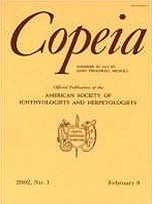The Sardinian brook salamander, Euproctus platycephalus, is an endemic newt restricted to the internal and mountainous regions of Sardinia (Italy). We study the age structure and the morphometric sexual dimorphism in one of the known largest breeding populations of this species. It takes both sexes a minimum of four years to reach maturity, and the period of immaturity often extends to six years. At the breeding site, males are significantly older than females, but we do not know whether these differences are because of a sex-biased longevity or to sex- and age-dependent differential activity patterns. Independently of age, sexes differ in both body size and body shape. Males are longer and heavier than females and show proportionally longer and larger heads, shorter cloacas, and longer hind limbs. Most of these between-sex differences might be explained in the light of the brook salamander's mating behavior, in which males capture females and directly force their spermatophora into the female cloaca.
How to translate text using browser tools
1 February 2003
Age and Sexual Dimorphism in a Population of Euproctus platycephalus (Caudata: Salamandridae) from Sardinia
S. Bovero,
G. Sotgiu,
S. Castellano,
C. Giacoma
ACCESS THE FULL ARTICLE





